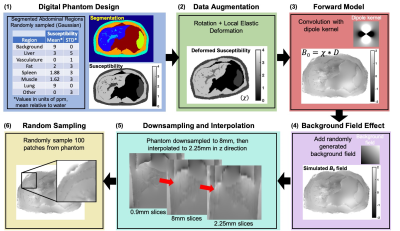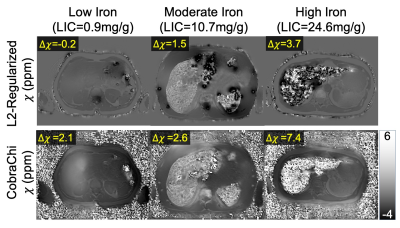Ruiyang Zhao1,2, Collin J Buelo2, Julia V Velikina1, Steffen Bollmann3, Ante Zhu4, Scott B Reeder1,2,5,6,7, and Diego Hernando1,2
1Radiology, University of Wisconsin-Madison, Madison, WI, United States, 2Medical Physics, University of Wisconsin-Madison, Madison, WI, United States, 3School of Information Technology and Electrical Engineering, University of Queensland, Brisbane, Australia, 4GE Global Research, Niskayuna, NY, United States, 5Biomedical Engineering, University of Wisconsin-Madison, Madison, WI, United States, 6Medicine, University of Wisconsin-Madison, Madison, WI, United States, 7Emergency Medicine, University of Wisconsin-Madison, Madison, WI, United States
1Radiology, University of Wisconsin-Madison, Madison, WI, United States, 2Medical Physics, University of Wisconsin-Madison, Madison, WI, United States, 3School of Information Technology and Electrical Engineering, University of Queensland, Brisbane, Australia, 4GE Global Research, Niskayuna, NY, United States, 5Biomedical Engineering, University of Wisconsin-Madison, Madison, WI, United States, 6Medicine, University of Wisconsin-Madison, Madison, WI, United States, 7Emergency Medicine, University of Wisconsin-Madison, Madison, WI, United States
A novel deep learning-based QSM method was developed and evaluated for the quantification of liver iron overload. Validation results demonstrated promising performance and agreement with reference susceptibility values across a wide range of iron overload.

Figure 1: Training of DL QSM: (1) Digital torso 3D phantom with various random-susceptibility regions; (2) Augmented with rotation and local elastic deformation; (3) Convolved with a dipole kernel (voxel:1.56x1.56x0.9mm3, matrix:2563) to create a field map; (4) A random background field was added; (5) The field map was down-sampled to 8mm slices (in-vivo resolution), then interpolated to 2.25mm to enable a deeper network; (6) 643 patches (n=100) were randomly pulled for training.

Figure 2: Representative
susceptibility maps from a previously proposed L2-regularized liver QSM method
(top), and the proposed CobraChi DL-based method (bottom), in patients with
various levels of liver iron. Compared to the L2-regularized method, CobraChi
may provide better robustness at high iron levels, although some artifactual
shading remains at low iron levels. For both QSM methods, Δχ
of the liver is measured relative to subcutaneous fat.